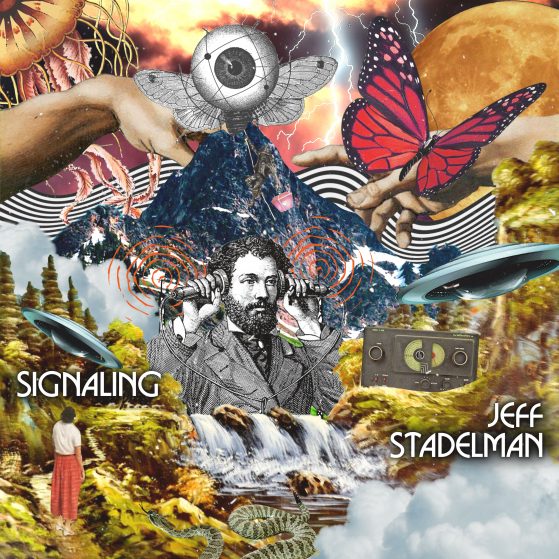Amidst a career of composing mainly for traditional orchestral instruments, Jeff Stadelman releases Signaling, his first album of entirely electronic, beat-oriented music.
Working in Williamsville, New York, oddly just a few blocks from where his first Micromoog synthesizer was manufactured in 1977, Jeff recently began re-exploring analog and digital synthesis, favoring the compositional limitations of small hardware devices like the Elektron Digitakt over the modern practices of laptop-based production. Using various hacks and adaptations, he creates uncanny musical vignettes that feature fat, bass- heavy hip hop and hauntingly otherworldly melodies, while evoking music boxes, retro VHS training videos, and mid-century advertising jingles.
On Signaling, Jeff embraces a quasi-minimalism dwelling in memories of radio, including the often synthesized intros, outros, stings, and bumpers of Norwegian [NRK], German, and U.S. public radio in the early 1980s. In addition, the album celebrates the culture of ham radio, the international shortwave radio spectrum, and all these entail: broadcast politics, noisy interference artifacts, and the musical interval signal beacons broadcast repetitively, often for hours on end, by international shortwave stations in order to identify and mark their positions on the dial—and in many cases their political positions as well.
With the majority of the album composed during the early months of the pandemic on small, self-contained grooveboxes, Signaling sees an artist working in physical isolation reaching out—much like ham radio enthusiasts—through technological windows to the outside world. Jeff’s musical signals extend geographically in space— alluding to German kosmische Musik and Detroit hip hop—and backwards in time, through sampling obscure, forgotten records, and exploring the recesses of personal and cultural memory.
For complete credits and liner notes, download the Signaling booklet.
Praise for Signaling
“With Signaling, I’m continually reminded of Russian nesting dolls, where each composition reveals an inner tune, and an even deeper detail is found within. It makes the listening experience somewhat time-free; there is a fluidity in the definition of song and motif, and the musical elements step into and out of focus beautifully. […] The result is satisfying, enjoyable, and one of the best albums I’ve heard in months.”
—Darwin Grosse, composer and host, Art + Music + Technology podcast
“Jeff Stadelman’s Signaling is a treasure box of memories you didn’t know you had. A colorful, kaleidoscopic collection of sounds, evoking times gone by, though sparkling with fresh light and flavours.”
—Susanna Borsch, international recorder virtuoso

